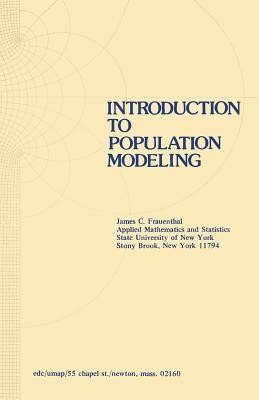
- We will send in 10–14 business days.
- Author: J C Frauenthal
- Publisher: Springer
- ISBN-10: 0817630155
- ISBN-13: 9780817630157
- Format: 14 x 21.6 x 1.1 cm, minkšti viršeliai
- Language: English
- SAVE -10% with code: EXTRA
Reviews
Description
The text of this monograph represents the author's lecture notes from a course taught in the Department of Applied Mathematics and Statistics at the State University of New York at Stony Brook in the Spring of 1977. On account of its origin as lecture notes, some sections of the text are telegraphic in style while other portions are overly detailed. This stylistic foible has not been modified as it does not appear to detract seriously from the readability and it does help to indicate which topics were stressed. The audience for the course at Stony Brook was composed almost entirely of fourth year undergraduates majoring in the mathematical sciences. All of these students had studied at least four semesters of calculus and one of probability; few had any prior experience with either differential equations or ecology. It seems prudent to point out that the author's background is in engineering and applied mathematics and not in the biological sciences. It is hoped that this is not painfully obvious. -vii- The focus of the monograph is on the formulation and solution of mathematical models; it makes no pretense of being a text in ecology. The idea of a population is employed mainly as a pedagogic tool, providing unity and intuitive appeal to the varied mathematical ideas introduced. If the biological setting is stripped away, what remains can be interpreted as topics on the qualitative behavior of differential and difference equations.
EXTRA 10 % discount with code: EXTRA
The promotion ends in 21d.20:17:39
The discount code is valid when purchasing from 10 €. Discounts do not stack.
- Author: J C Frauenthal
- Publisher: Springer
- ISBN-10: 0817630155
- ISBN-13: 9780817630157
- Format: 14 x 21.6 x 1.1 cm, minkšti viršeliai
- Language: English English
The text of this monograph represents the author's lecture notes from a course taught in the Department of Applied Mathematics and Statistics at the State University of New York at Stony Brook in the Spring of 1977. On account of its origin as lecture notes, some sections of the text are telegraphic in style while other portions are overly detailed. This stylistic foible has not been modified as it does not appear to detract seriously from the readability and it does help to indicate which topics were stressed. The audience for the course at Stony Brook was composed almost entirely of fourth year undergraduates majoring in the mathematical sciences. All of these students had studied at least four semesters of calculus and one of probability; few had any prior experience with either differential equations or ecology. It seems prudent to point out that the author's background is in engineering and applied mathematics and not in the biological sciences. It is hoped that this is not painfully obvious. -vii- The focus of the monograph is on the formulation and solution of mathematical models; it makes no pretense of being a text in ecology. The idea of a population is employed mainly as a pedagogic tool, providing unity and intuitive appeal to the varied mathematical ideas introduced. If the biological setting is stripped away, what remains can be interpreted as topics on the qualitative behavior of differential and difference equations.


Reviews